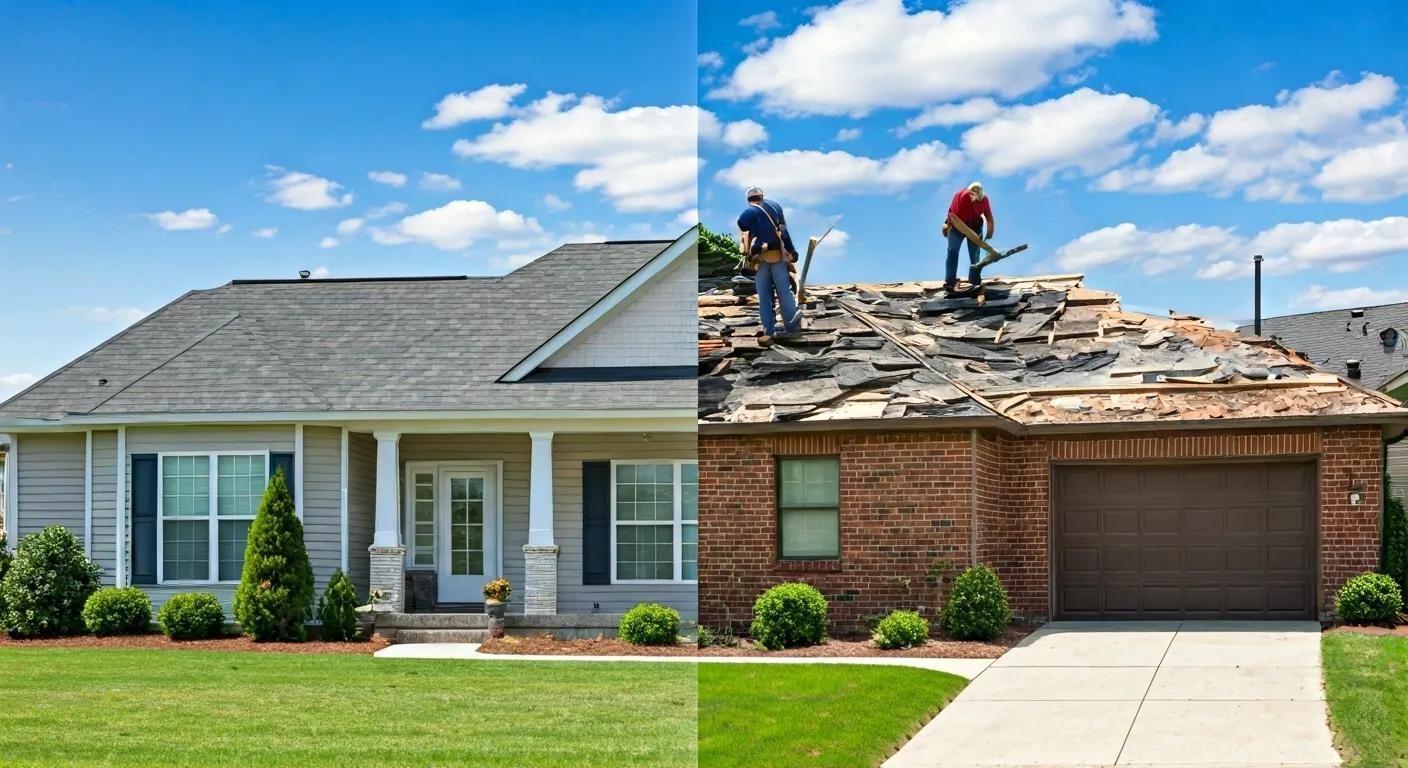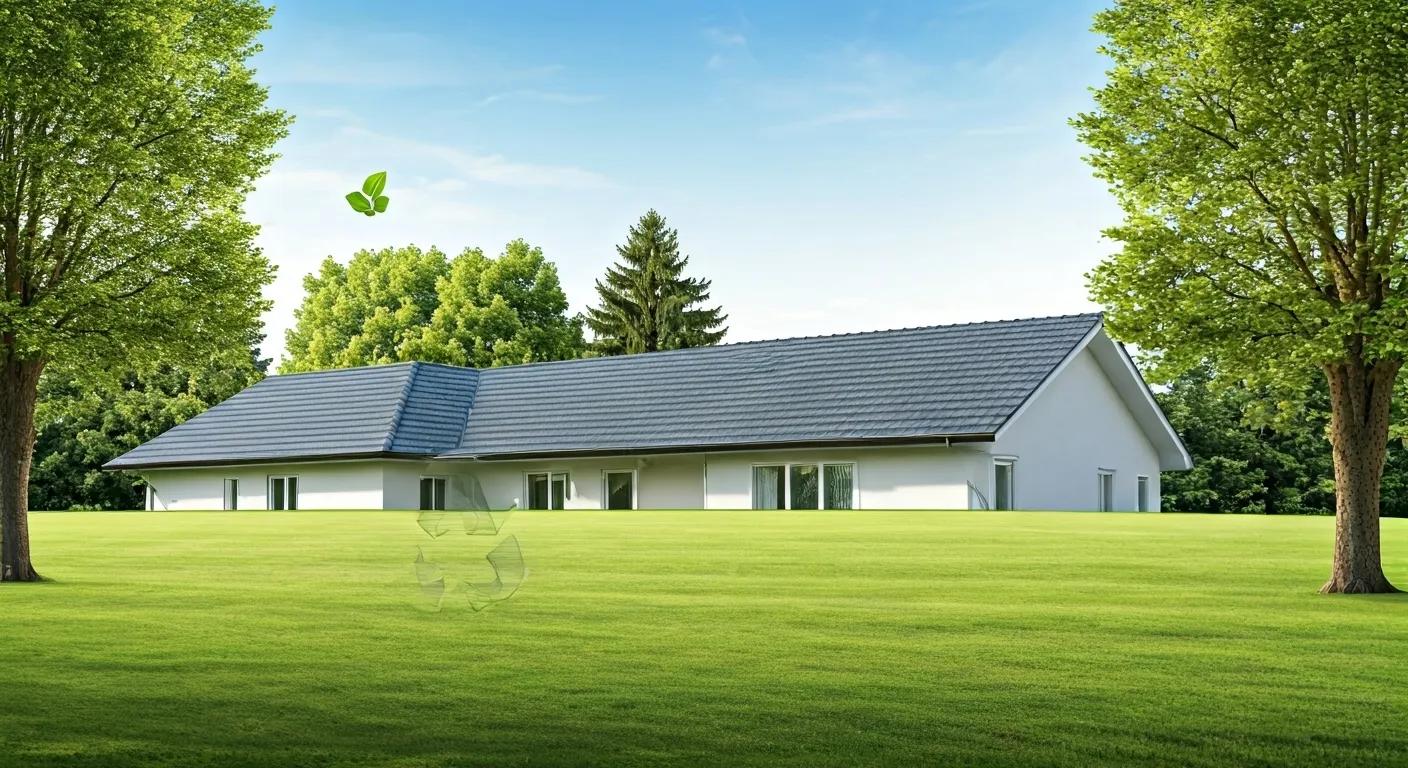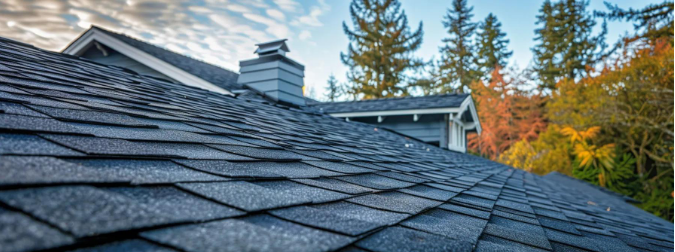
Choosing between reroofing and full roof replacement shapes your home’s long-term durability, budget, and aesthetic appeal. This guide lays out clear definitions, practical benefits, potential drawbacks, and decision-making cues, mapped to cost, lifespan, environmental impact, and compliance. You’ll learn
- what each process entails and when it fits your project scope
- how overlaying a new layer saves time, cuts waste, and enhances energy efficiency
- why a complete tear-off unlocks structural inspection, extended warranties, and property value gains
- which signs, regulations, and professional steps steer you toward the right option in Adelaide
With targeted insights for homeowners and a nod to Adelaide Roofing and Construction’s commitment to compliant, sustainable roofing solutions, this resource ensures you pick the ideal path for long-lasting protection and performance.
What Is Reroofing and How Does It Compare to Roof Replacement?
Reroofing and roof replacement both deliver a refreshed protective covering on your home, but they differ fundamentally in scope, waste generation, and structural scrutiny. Reroofing adds a fresh layer of shingles atop an existing roof deck, offering a quicker, cost-savings route when the underlying structure remains sound. Roof replacement involves stripping all old materials down to the decking, enabling comprehensive inspection and repair of hidden damage before installing a complete new system.
What Does Reroofing Involve and When Is It Suitable?
Reroofing installs a second layer of roofing material over the existing roof when one layer remains intact. This overlay process sidesteps tear-off debris, cutting disposal costs and accelerating installation by up to 50 percent. For example, a single-story home with minor shingle curling and no structural rot can regain a new appearance and extended weatherproofing in days rather than weeks. Reroofing suits surfaces with limited wear, solid decking, and compliance with local limits on roof layers.
How Is Roof Replacement Defined and When Should It Be Considered?
Roof replacement removes all roofing materials down to the roof deck, inspects underlayment, replaces damaged sheathing, and installs a full new system. This approach becomes essential when decking shows rot, multiple shingle layers already exist, or your roof has reached 20 years and beyond typical lifespan. A complete overhaul uncovers hidden water damage, corrects structural sagging, and resets the warranty clock to maximise durability for 25–50 years.
What Are the Key Differences Between Reroofing and Roof Replacement?
Below is a targeted comparison of core attributes to clarify decision factors:

Roof Lifespan and Material Choices
The lifespan of a roof varies significantly depending on the material used, with asphalt shingles typically lasting 20-30 years, while materials like slate and clay tiles can last 75 years or more. Factors such as climate and proper maintenance also influence a roof's longevity.
What Are the Advantages of Reroofing Compared to Roof Replacement?
Reroofing accelerates project timelines, reduces material waste, and refreshes aesthetics without a full teardown. These benefits align with sustainable roofing practices and budget-minded homeowners aiming for quick turnarounds.
How Does Reroofing Save Cost and Time?
Reroofing cuts material removal by skipping tear-off, saving up to 40 percent on labor and disposal fees. Installation time shrinks by nearly half since roofers can overlay a layer of asphalt shingles in as few as two days on a typical 1,500 sq ft home. Faster completion also limits weather exposure and lowers interim protection costs.
Reroofing vs. Roof Replacement Costs
Reroofing is generally more cost-effective upfront due to less labor and material waste, while roof replacement involves higher initial costs. However, roof replacement offers a longer-lasting solution.
What Environmental Benefits Does Reroofing Offer?

By preserving the existing underlayment and decking, reroofing reduces construction and demolition waste by approximately 600 million tons annually in the U.S. context, translating to fewer landfill trips and lower carbon emissions from transport and recycling. Less waste aligns with green building guidelines and supports Adelaide Roofing and Construction’s pledge to sustainable practices.
How Does Reroofing Affect Energy Efficiency and Aesthetics?
Installing modern reflective shingles over an intact deck enhances thermal performance, cutting attic heat gain by up to 15 percent and lowering cooling bills. A fresh color palette revives curb appeal instantly without extensive scaffolding or facade alteration, making reroofing an efficient aesthetic upgrade.
What Are the Disadvantages and Risks of Reroofing?
While reroofing delivers cost and time savings, overlaying can conceal existing defects and may shorten a roof’s remaining lifespan if underlying damage persists.
What Hidden Damages Can Reroofing Conceal?
Overlaying new shingles can mask underlying deck rot, underlayment failures, and flashing gaps. Without a tear-off inspection, trapped moisture pockets can accelerate structural decay and lead to leaks weeks or months after installation.
How Does Reroofing Impact Roof Lifespan and Warranty?
Adding a second layer typically reduces the new system’s warranty duration, manufacturers may limit coverage to ten years versus twenty for a full replacement. A reroof effectively inherits the remaining life of the first layer, capping long-term lifespan at around 20 years.
What Are the Structural and Building Code Limitations of Reroofing?
Most jurisdictions restrict roofs to two shingle layers to avoid excessive weight on rafters. Exceeding layer limits incurs permit violations and may force an eventual tear-off, negating initial cost savings and risking noncompliance in Adelaide’s building code framework.
What Are the Advantages of Roof Replacement Over Reroofing?
A full roof replacement delivers unmatched structural assurance, extended warranty options, and long-term investment returns, positioning it as the top choice when durability and compliance are paramount.
How Does Roof Replacement Improve Structural Integrity and Longevity?
Complete removal allows professional inspection of roof decking, rafters, and underlayment. Repairing or replacing compromised sheathing prevents future leaks and sagging. A new system built on sound decking offers a 25–50 year functional lifespan, doubling expected longevity.
How Does Roof Replacement Increase Property Value and Energy Efficiency?
A new roof adds up to 70 percent of its cost back in resale value and provides the opportunity to install high-efficiency underlayments and cool-roof shingles. These upgrades reduce energy consumption by up to 20 percent and appeal to eco-conscious buyers.
What Warranty and Compliance Benefits Does Roof Replacement Provide?
Most manufacturers offer 20–50 year material warranties and transferable coverage, substantially longer than reroof overlays. Complete replacements also lock in code-compliant materials, permit documentation, and product registration for full legal and performance protection.
What Are the Disadvantages of Roof Replacement Compared to Reroofing?
Despite its merits, a full replacement involves higher upfront investment, extended project timelines, and increased waste handling.
Why Is Roof Replacement More Expensive and Time-Consuming?
Tear-off labor, debris disposal, deck repairs, and permitting extend replacement costs by 30–50 percent. The typical 7- to 14-day schedule for a 1,500 sq ft home doubles the timeframe versus reroofing, adding temporary protection and site safety considerations.
How Does Roof Replacement Affect Environmental Impact and Disruption?
Removal of all materials generates significant construction debris requiring certified landfill disposal or recycling. Extended scaffolding and demolition noise increase neighbor disruption and site traffic.
When Should You Choose Reroofing vs Roof Replacement?
Balancing roof condition, budget, and long-term goals guides the right choice. Minor wear and single-layer deck soundness point to reroofing, while structural damage, multiple existing layers, or plan for decades of use signal full replacement.
What Are the Signs That Indicate Reroofing Is the Best Option?
Homeowners observe isolated shingle granule loss, minor curling, and intact underlayment. A single existing layer, absence of interior leaks, and moderate age (10–15 years) on a structurally sound deck are clear indicators for overlay.
When Is Roof Replacement Necessary Due to Damage or Structural Issues?
Full replacement becomes non-negotiable if you discover decking rot, soft spots underfoot, multiple shingle layers already present, or leak histories after heavy storms. Extensive water damage or code violations in layer count make tear-off mandatory.
How Do Building Codes and Local Regulations Influence This Decision in Adelaide?
Adelaide’s building code allows a maximum of two shingle layers and mandates structural compliance inspections for tear-off projects. Permit fees, mandatory safety measures, and updated wind-rated materials often accompany replacement, ensuring legal conformity and peace of mind.
Building Codes and Compliance
Roofing projects in Adelaide must adhere to the National Construction Code (NCC), Australian Standards, and local council regulations. These standards cover aspects like design, installation, and materials to ensure safety and performance.
How Can a Professional Roofing Contractor Help You Decide Between Reroofing and Roof Replacement?
Partnering with an experienced roofing contractor like Adelaide Roofing and Construction brings technical inspection, regulatory navigation, and service assurance to your decision process, translating complex variables into clear recommendations.
Why Is a Roof Inspection Essential Before Choosing?
A comprehensive inspection uncovers sheathing integrity, underlayment condition, and flashing defects that dictate whether overlay remains viable. Certified inspectors deliver detailed reports, reducing the risk of hidden damage driving future repair costs.
How Do Contractors Navigate Permits and Building Codes?
Licensed roofing providers handle building permit applications, ensure adherence to Adelaide’s layer limits, and install code-approved materials. They liaise with local authorities to secure timely approvals and incorporate safety measures that protect both workers and property.
What Should You Expect Regarding Warranties and Service Guarantees?
Professional contractors provide workmanship warranties alongside manufacturer guarantees. Adelaide Roofing and Construction typically offers 5–10 year labor warranties, ensuring any post-installation issues are corrected at no extra cost, and guides clients through material registration for up to 50 year coverage.
Selecting the right roof service sets the foundation for decades of shelter, efficiency, and value. Whether you pursue a cost-efficient reroof or invest in a full replacement, informed choices driven by inspection, code compliance, and long-term goals deliver enduring performance. Reach out to Adelaide Roofing and Construction for a detailed assessment and tailored proposal that aligns with your home’s needs and local regulations.

